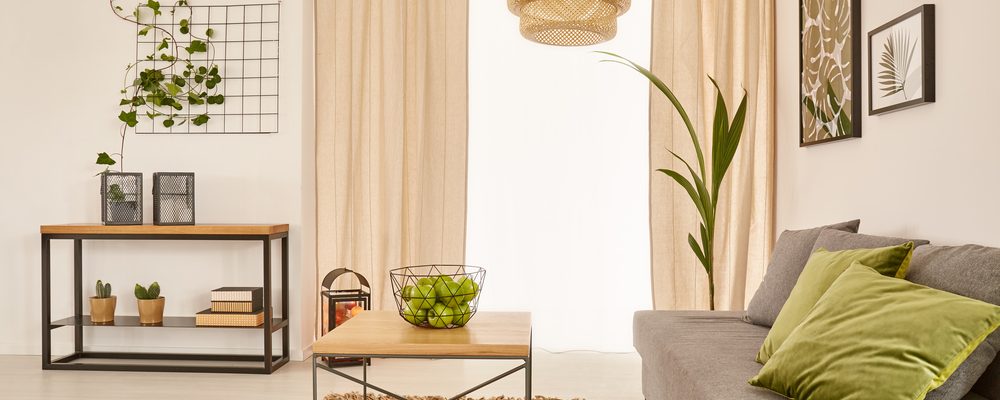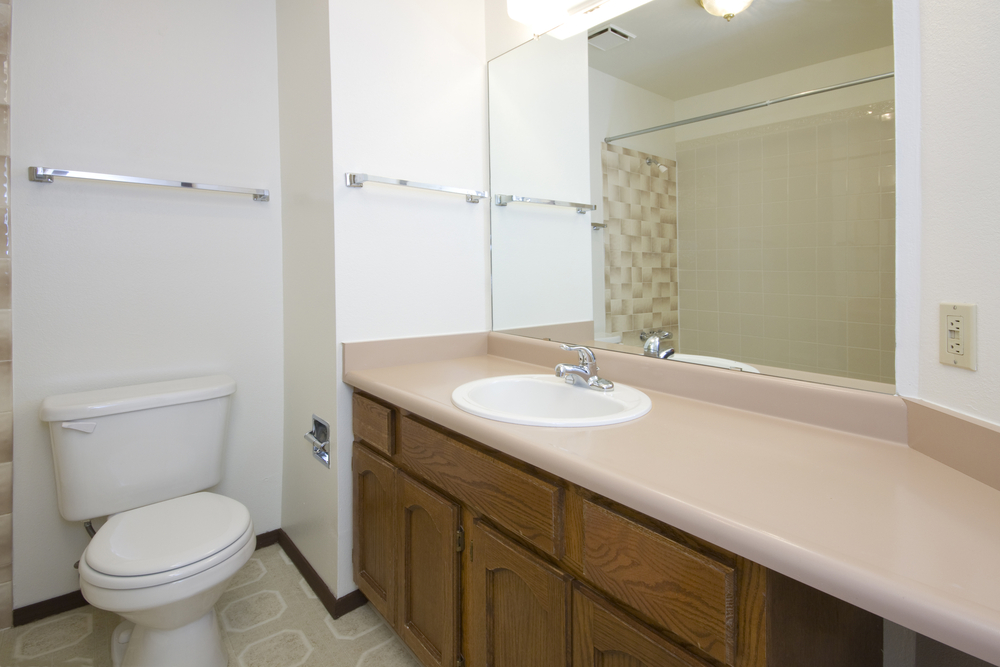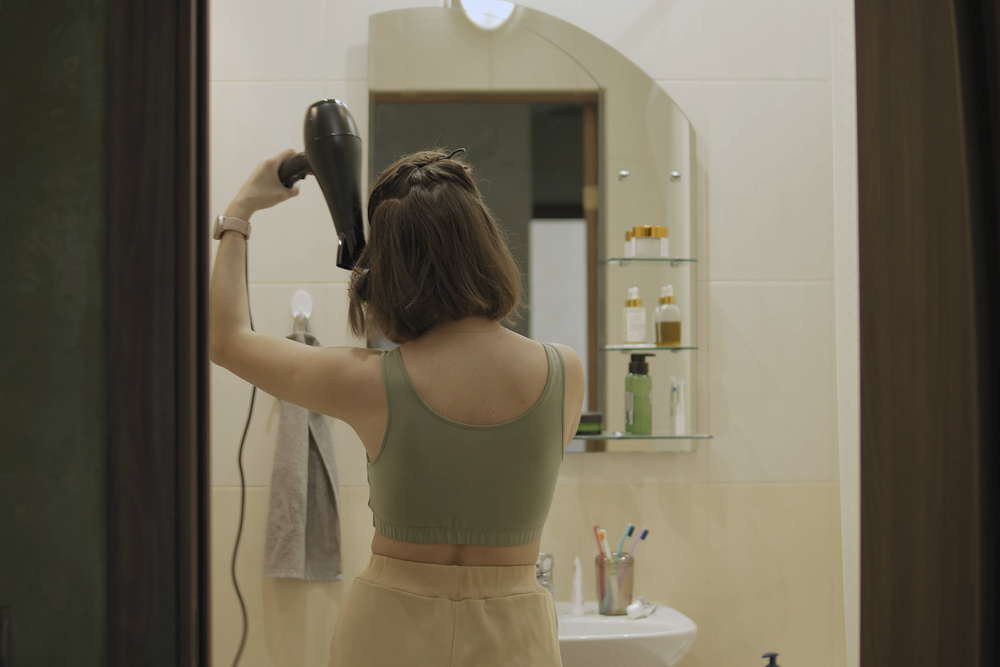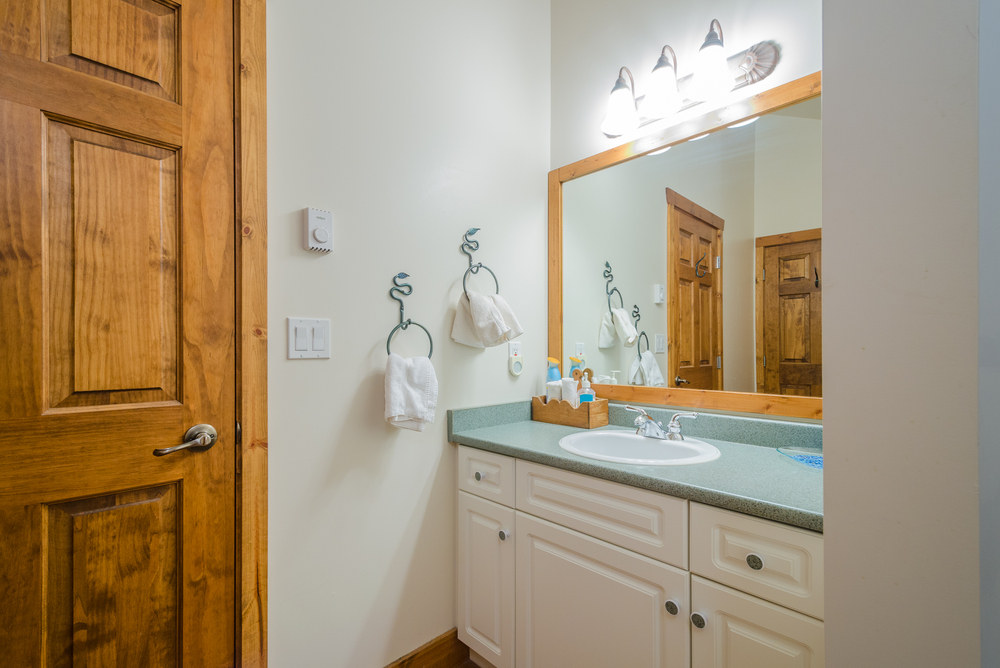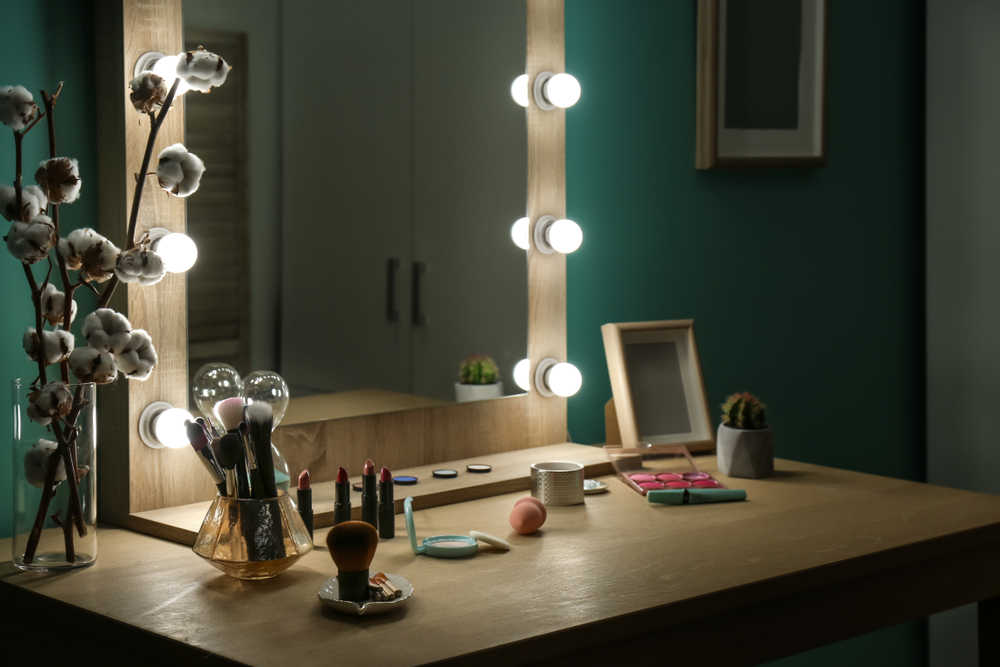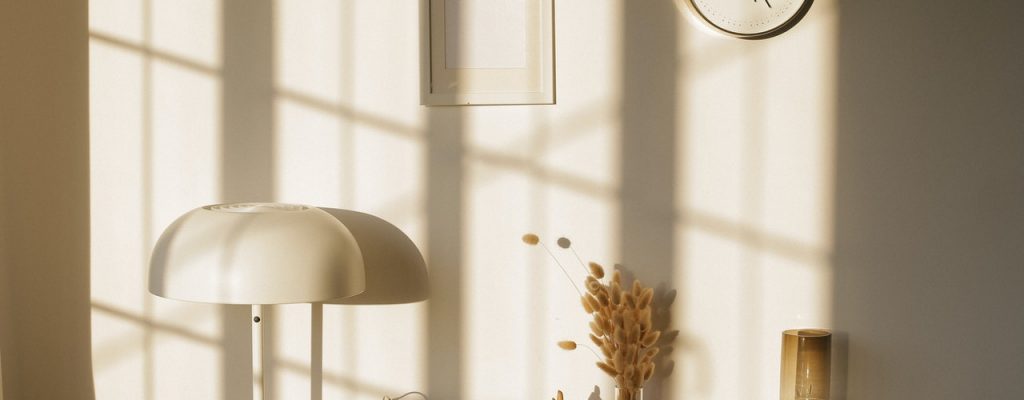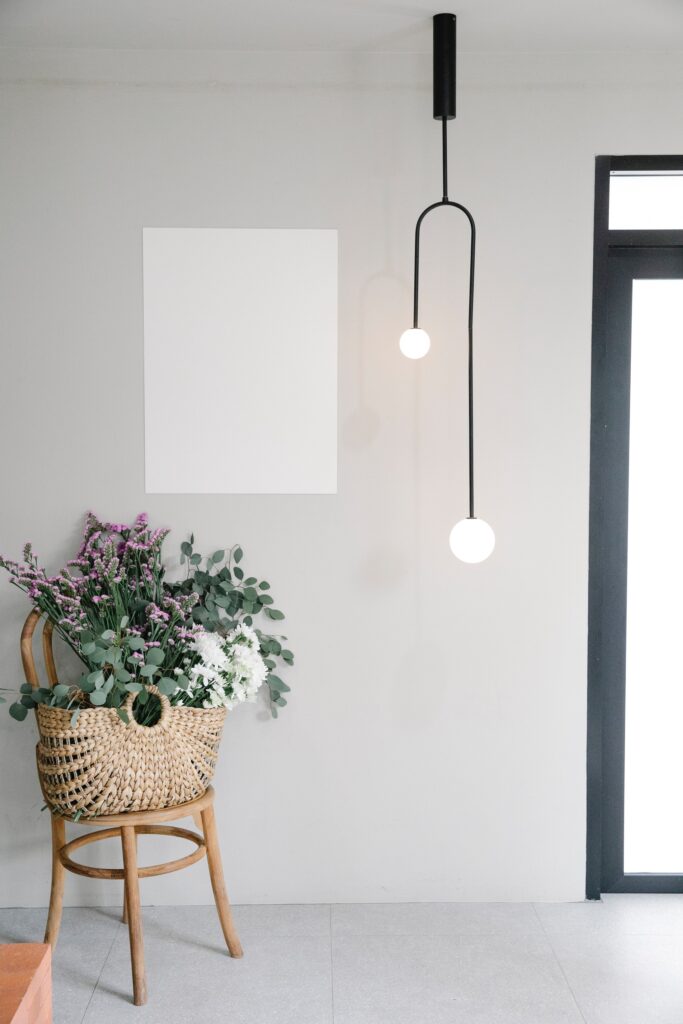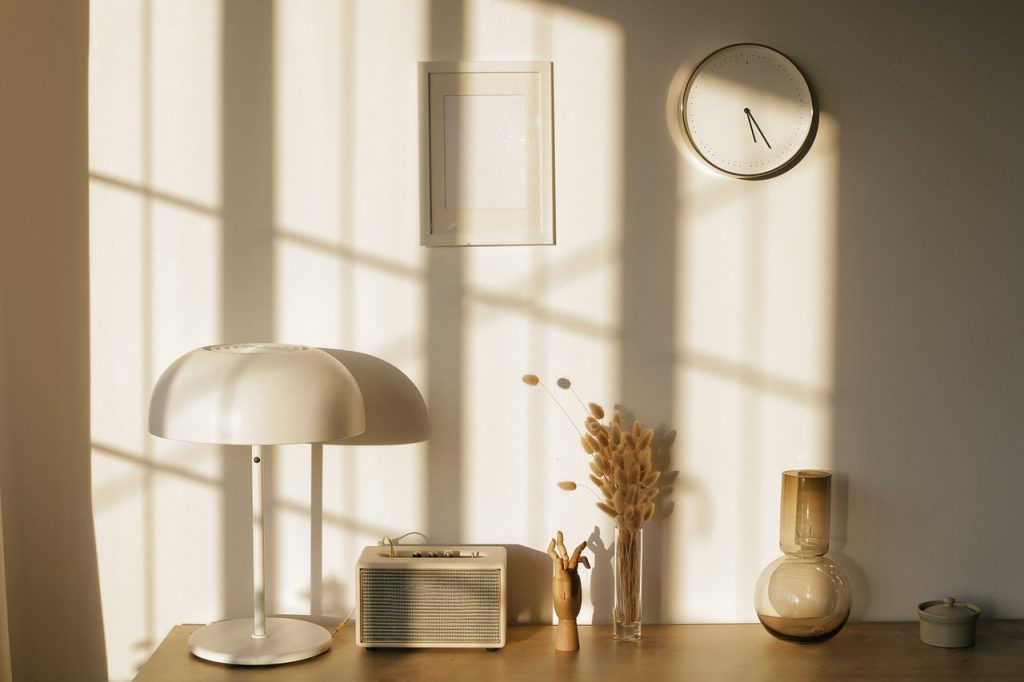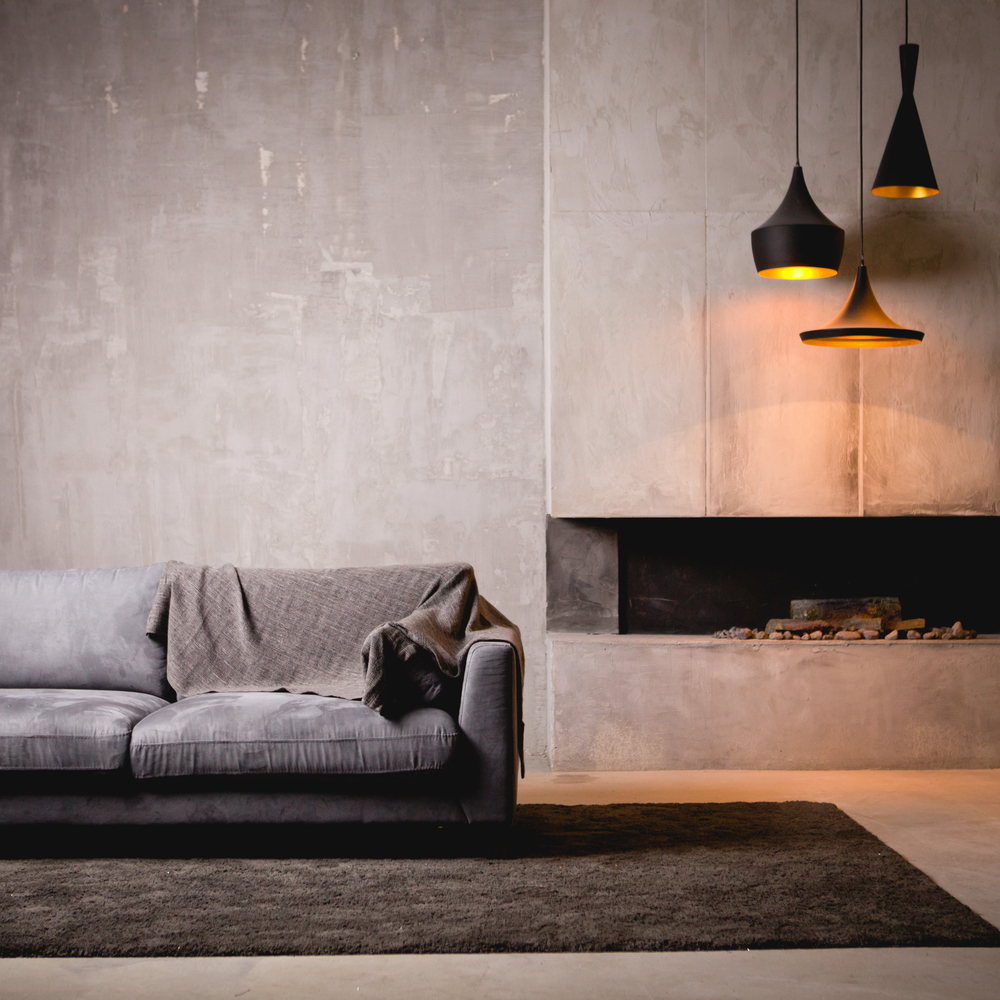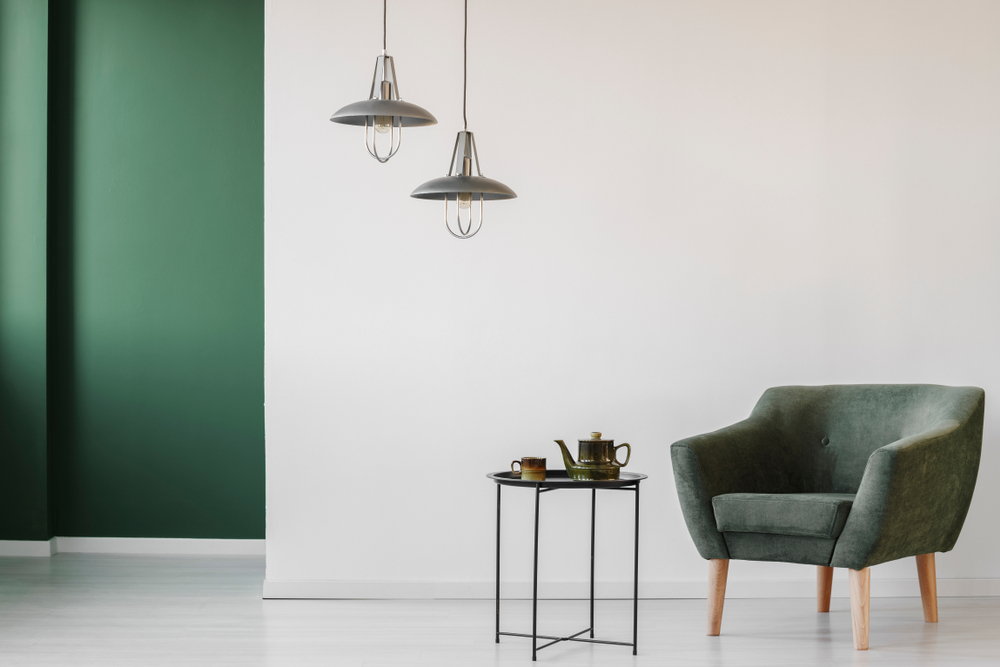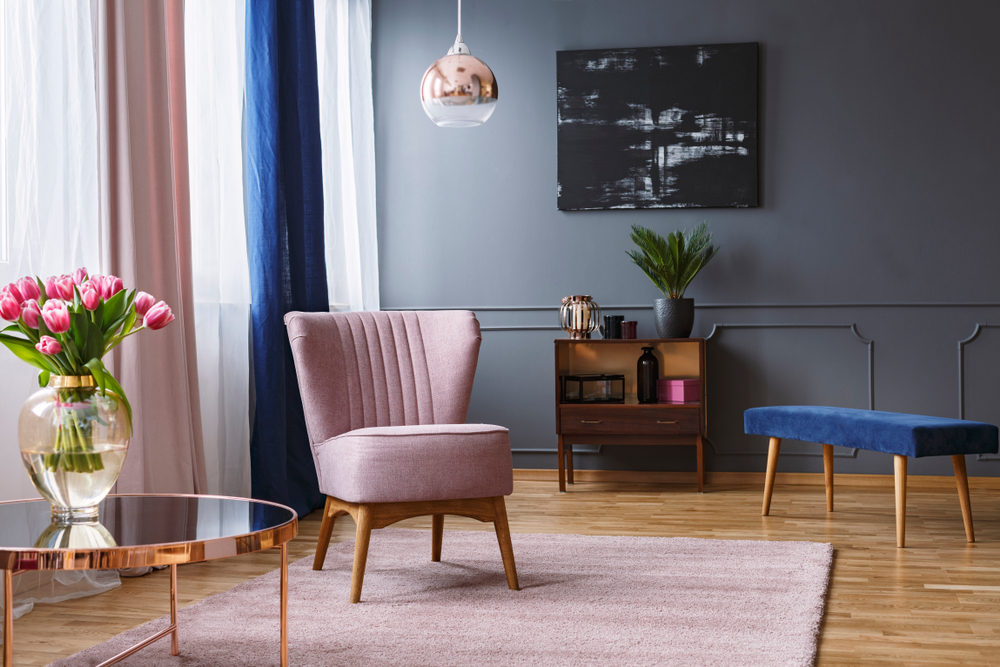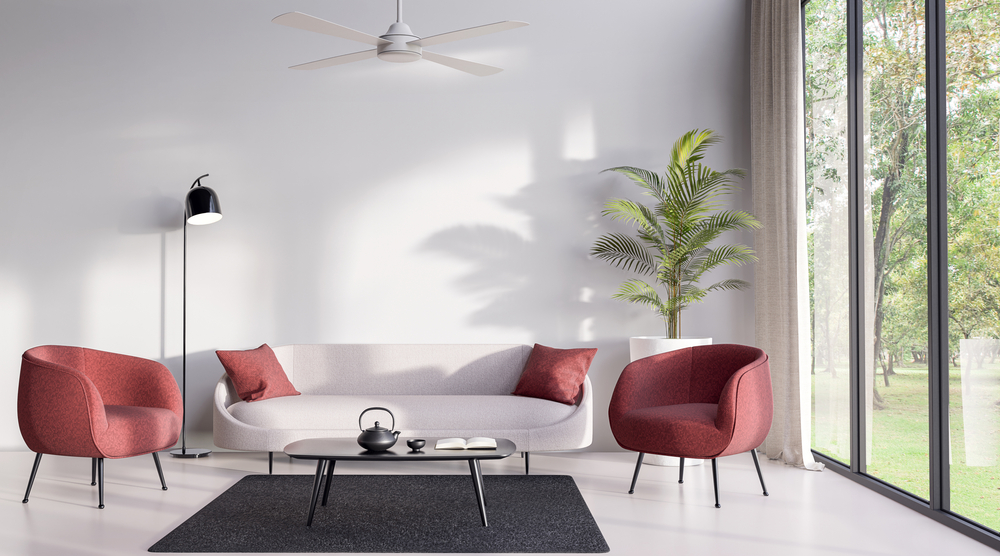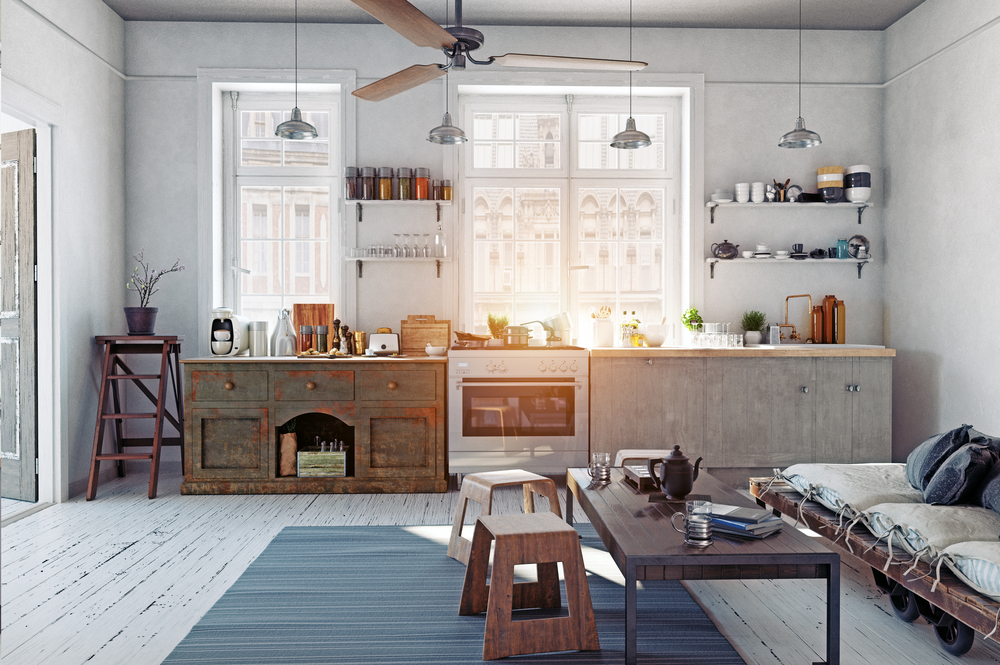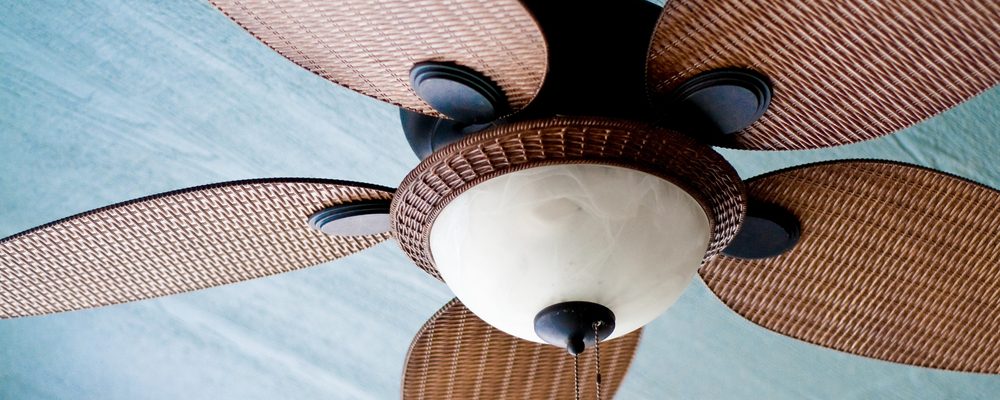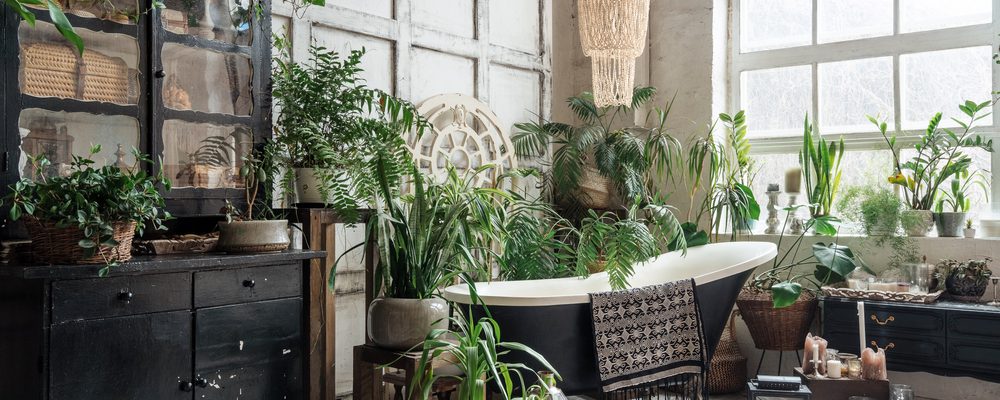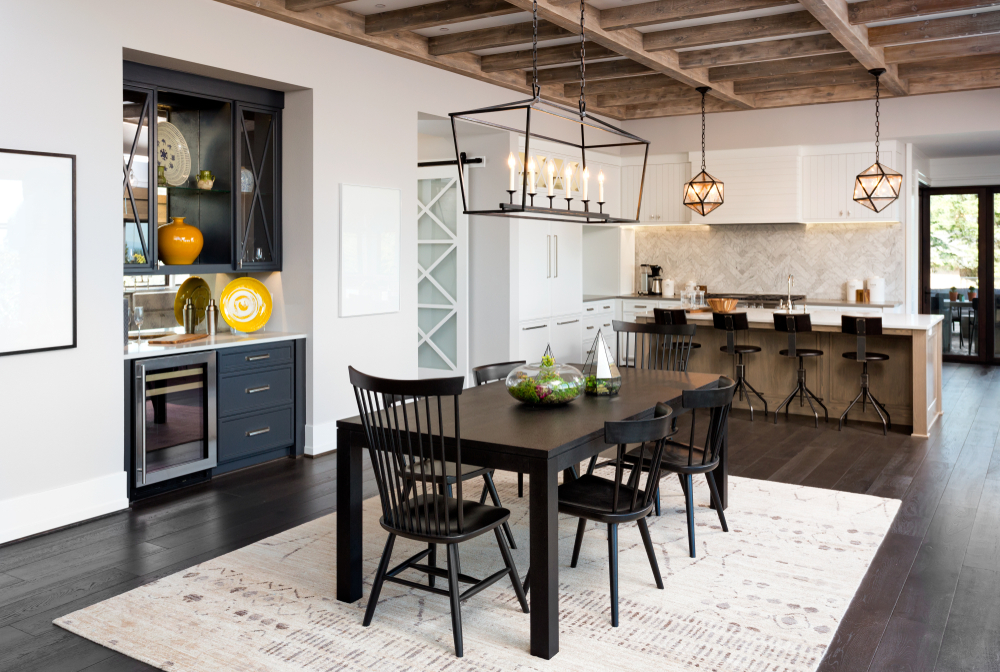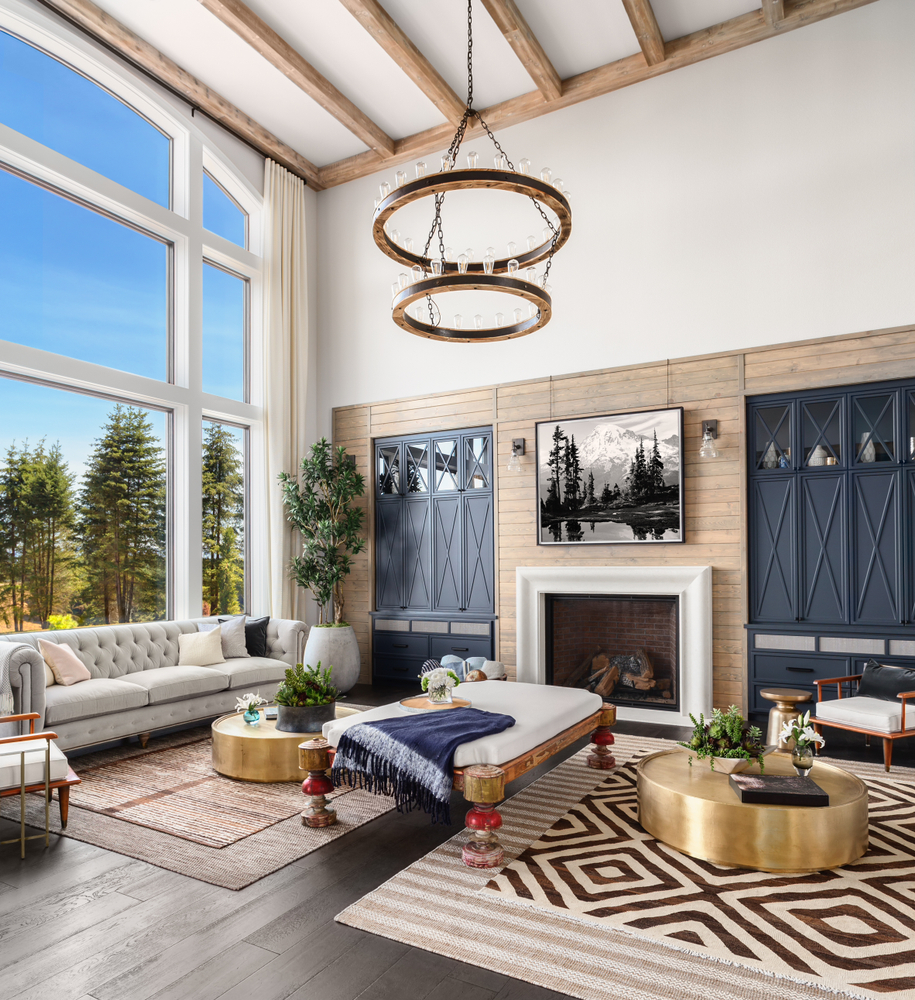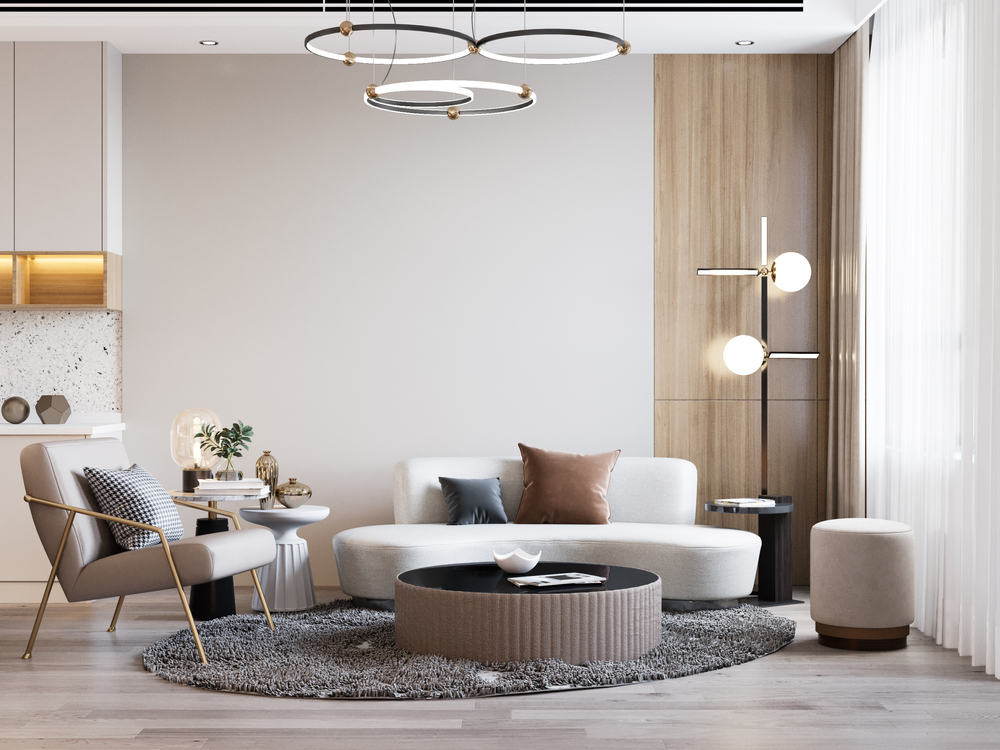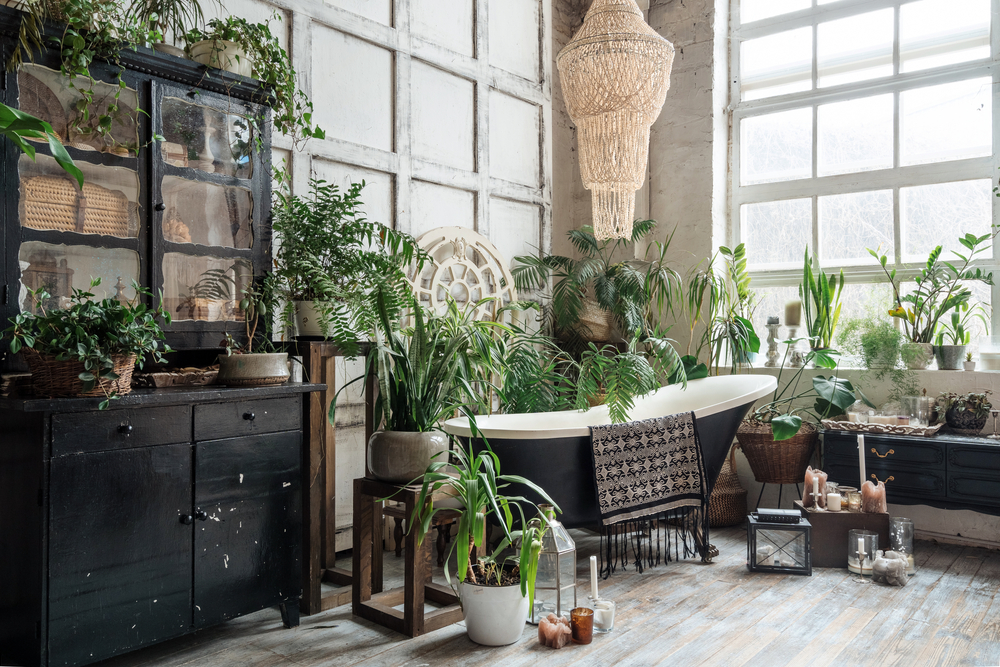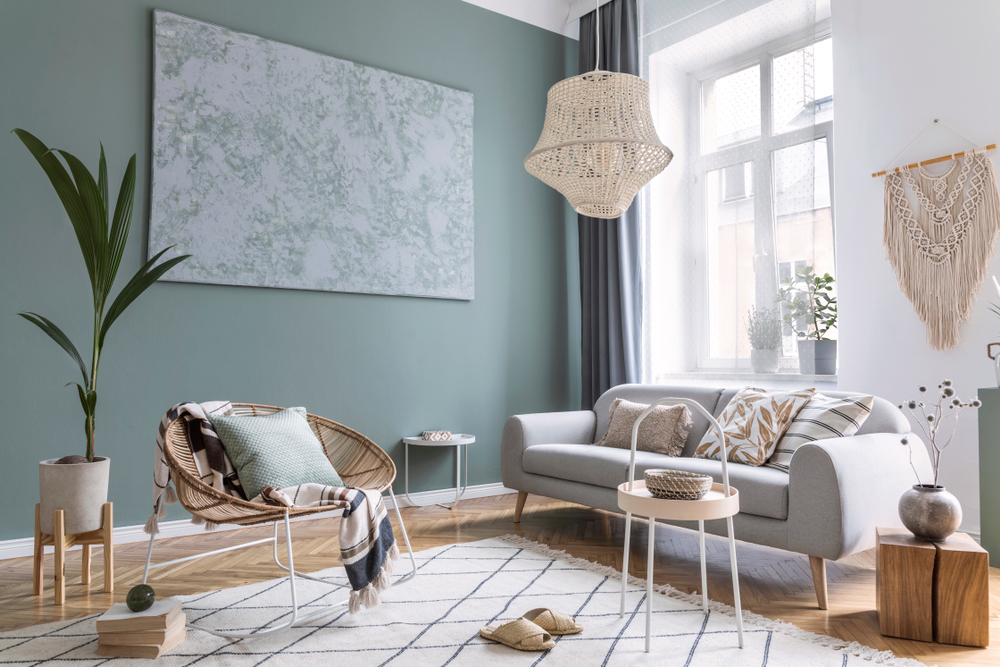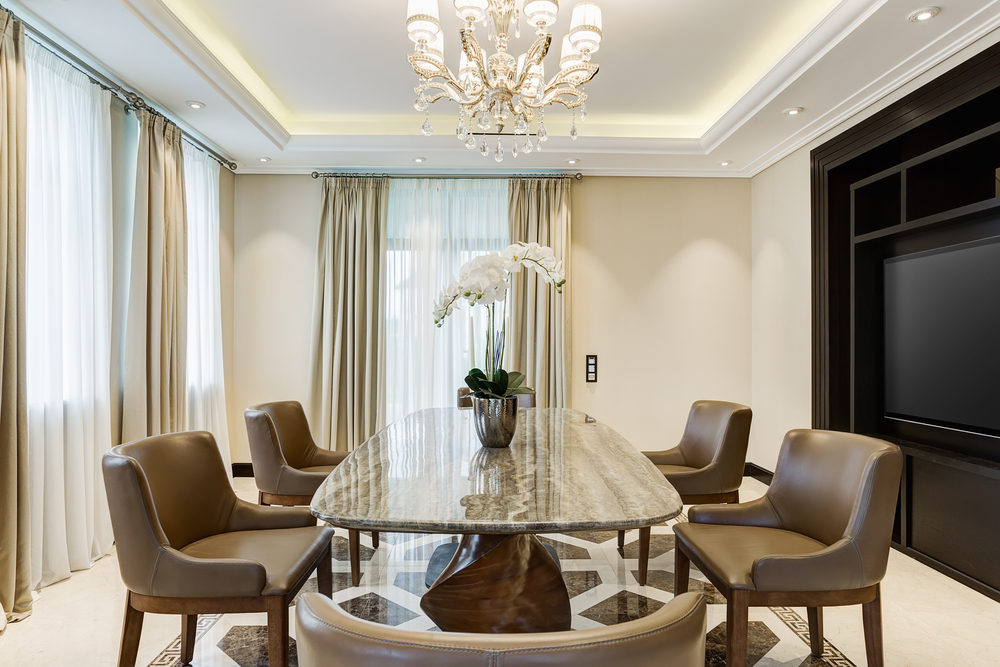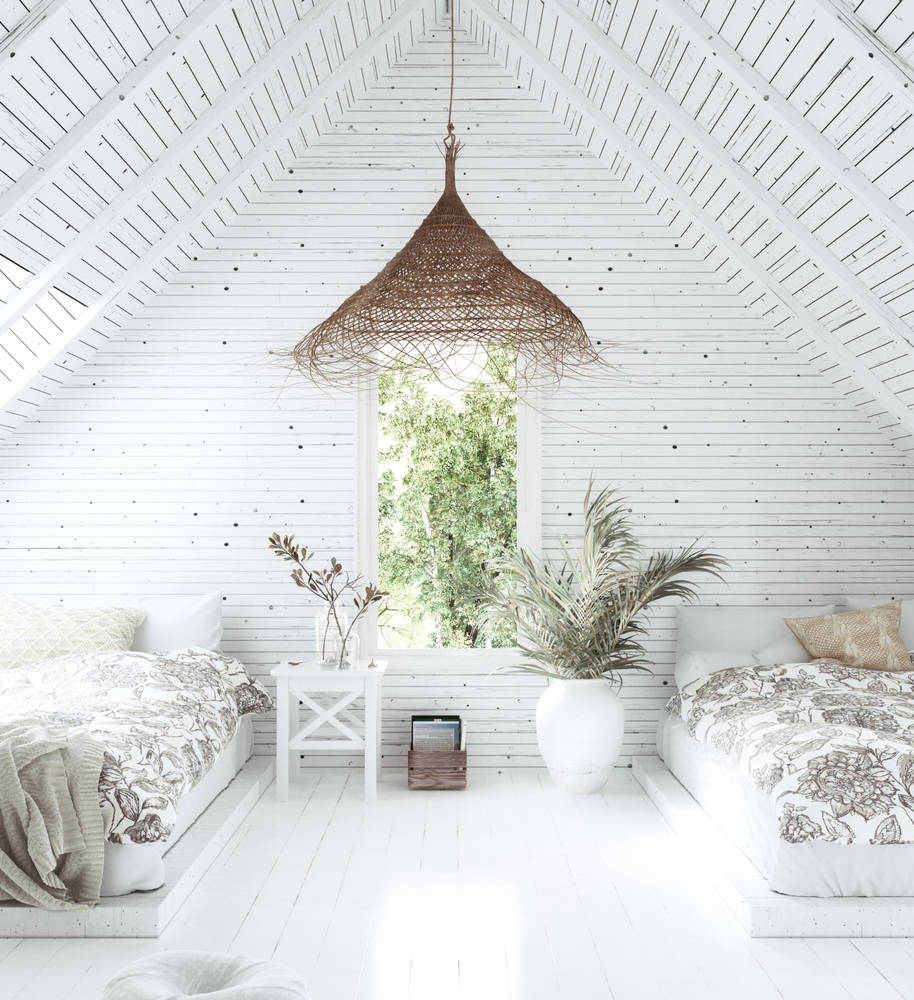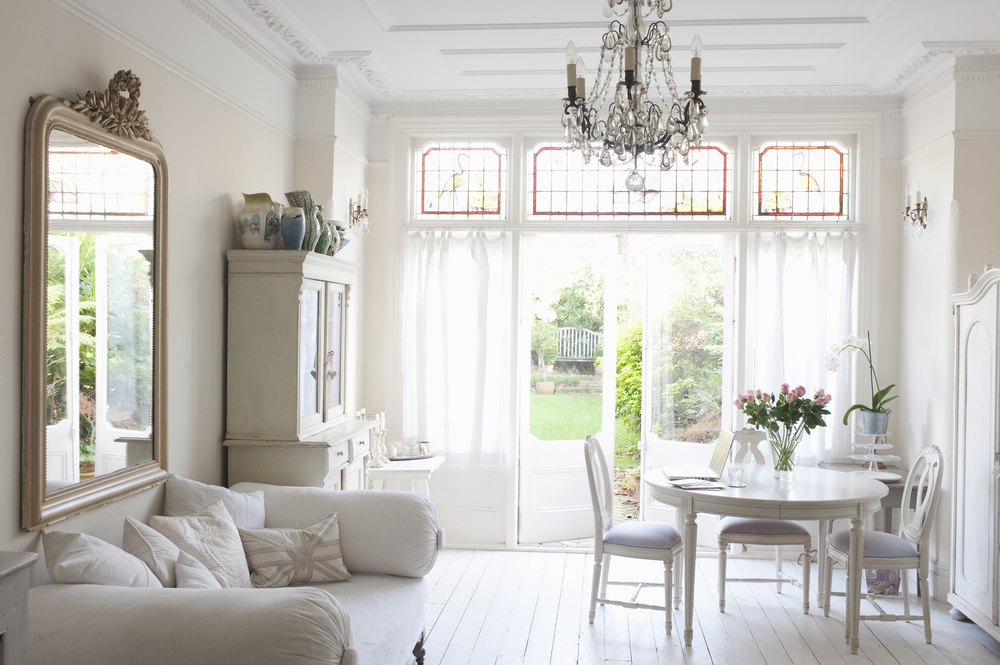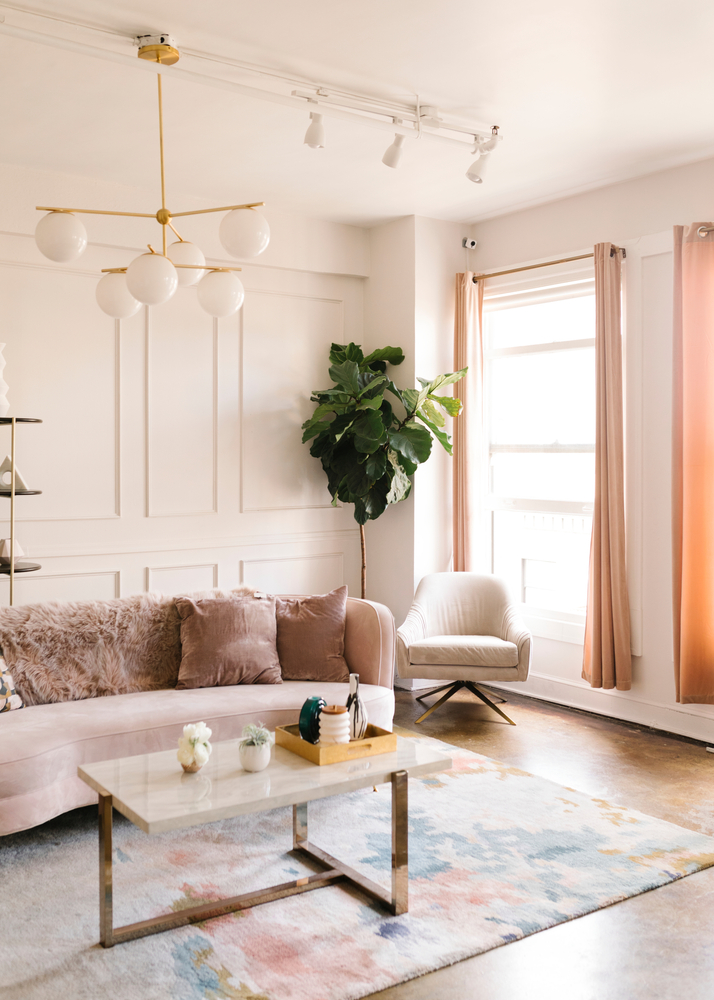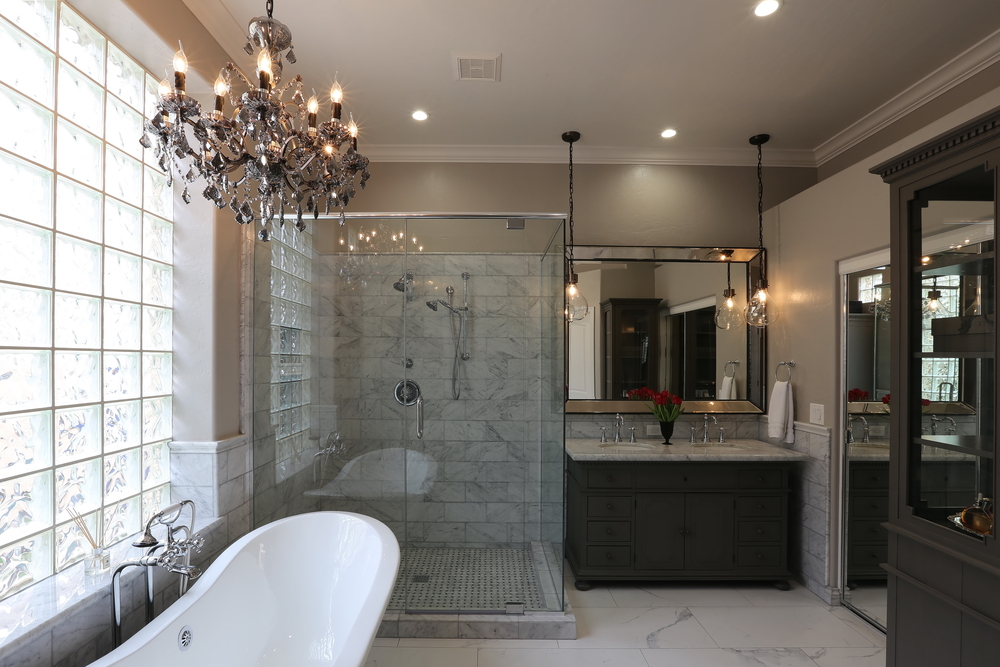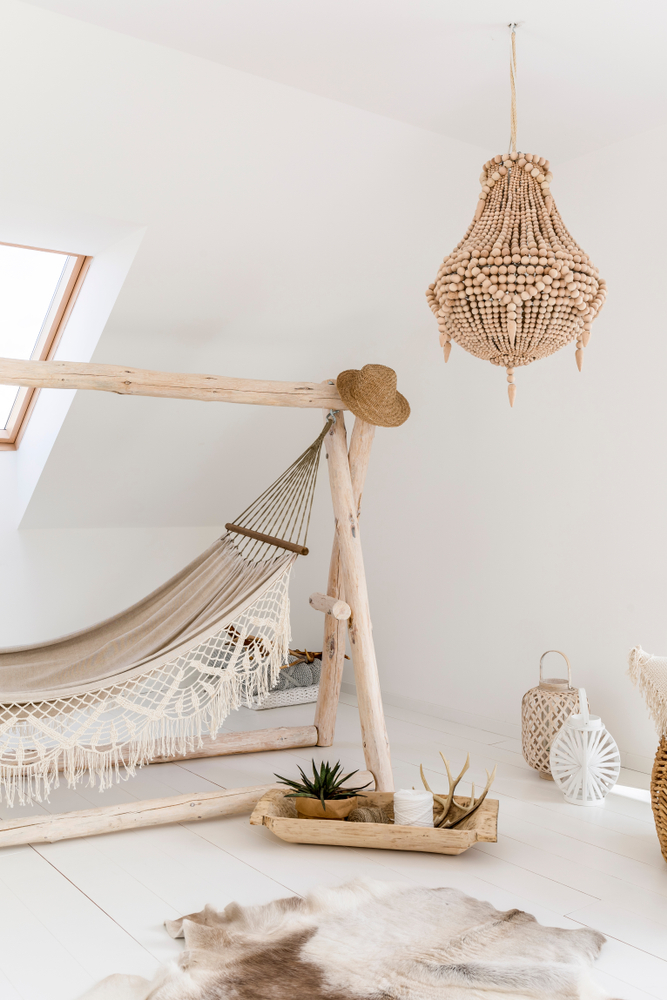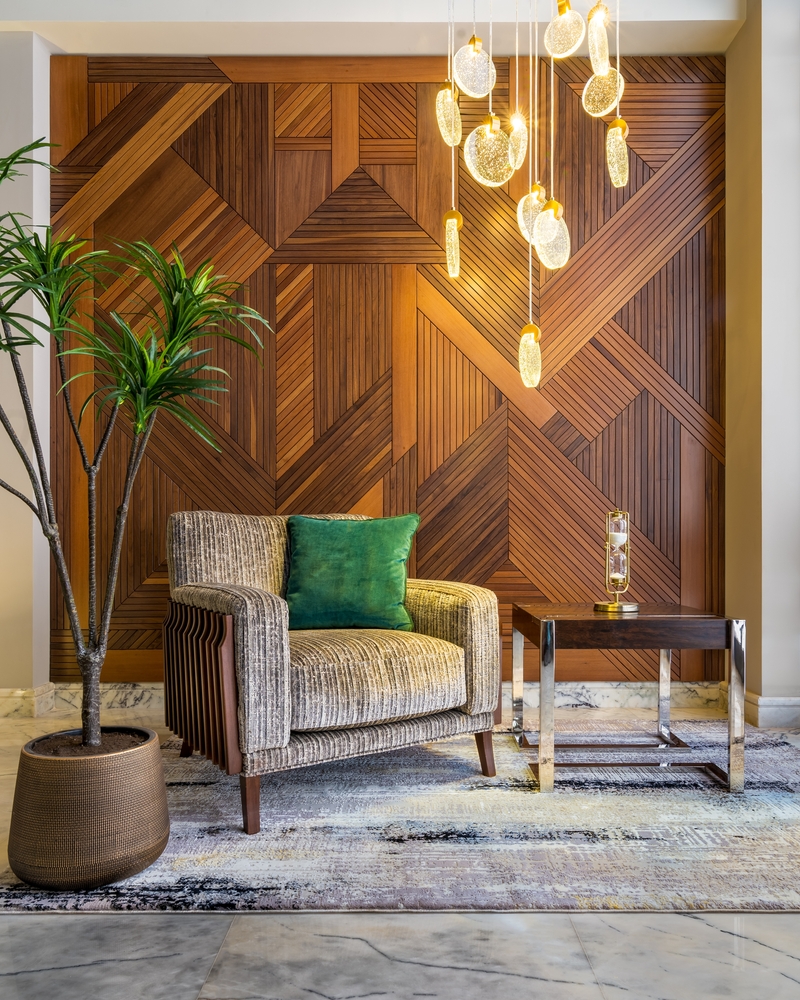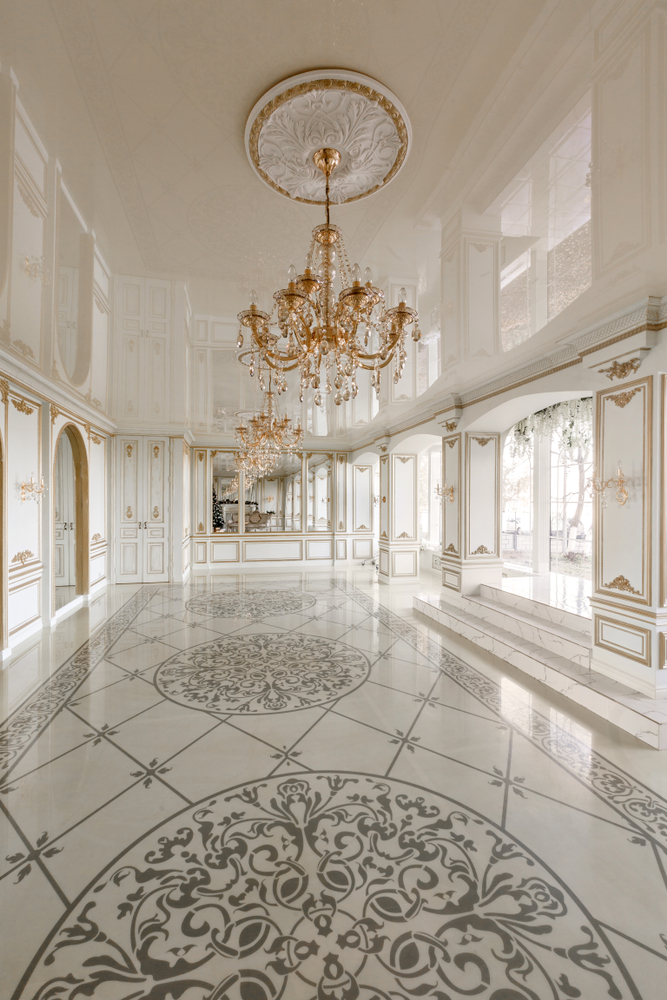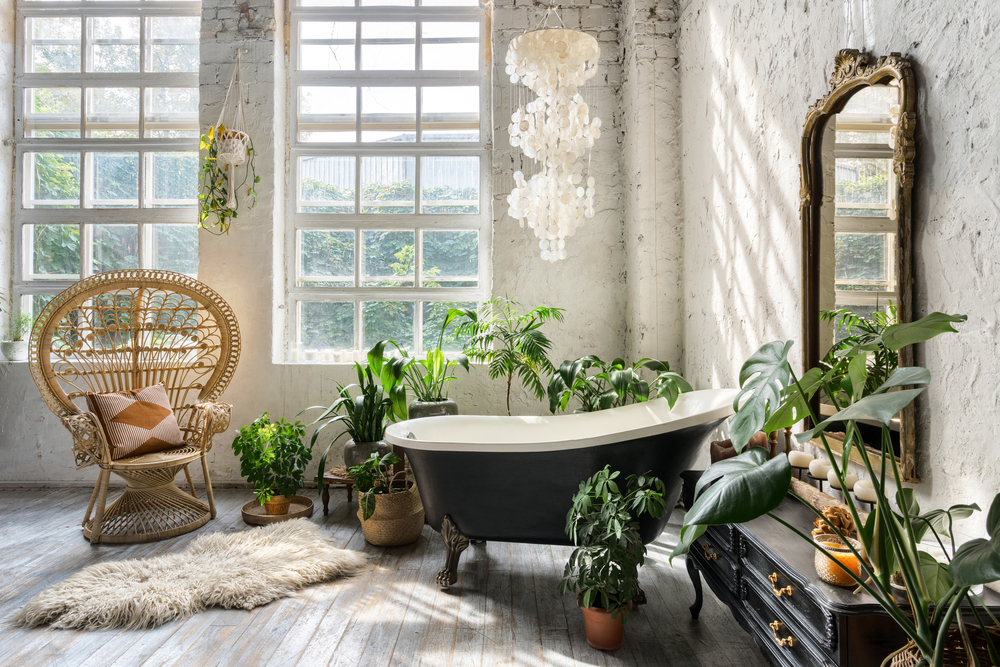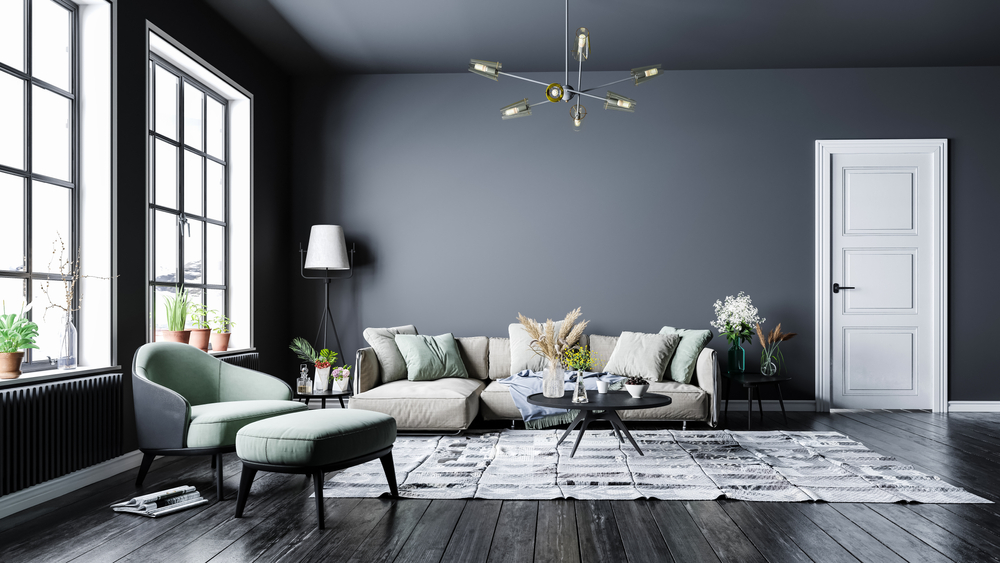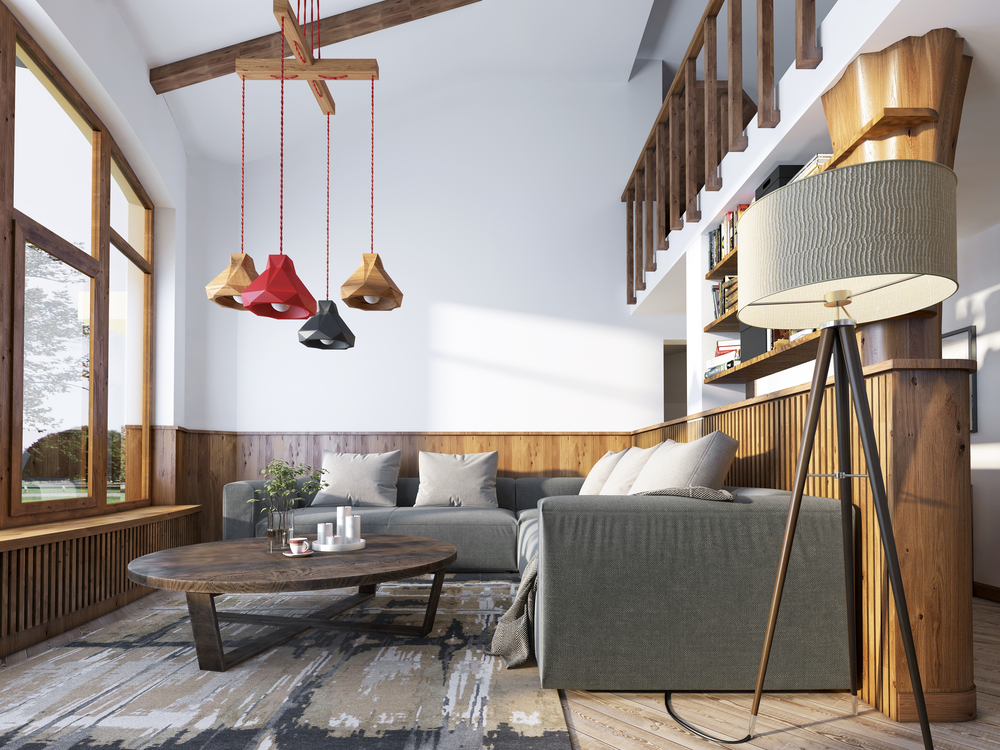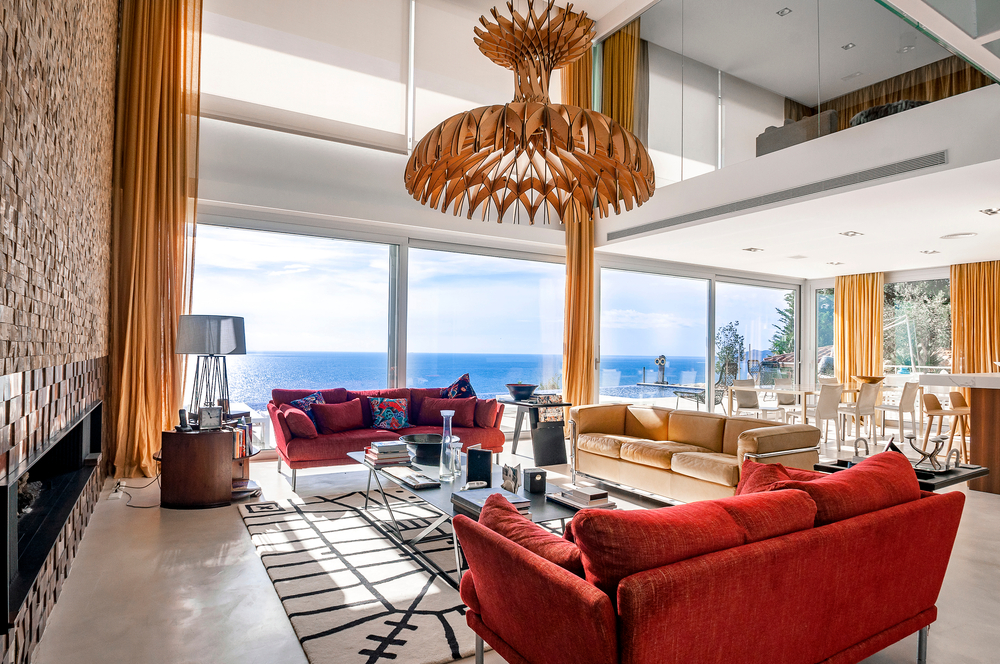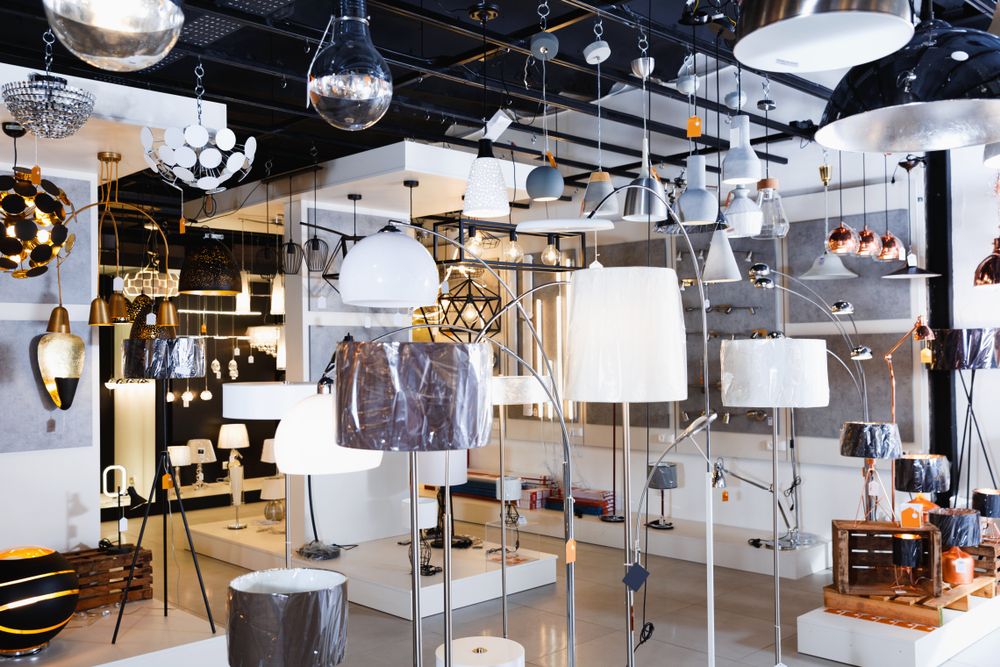Eco-friendly. Plant-inspired. Natural colors. These well-loved decor trends are giving homes across the world a breath of fresh air by inviting the outside in.
Whether you take care of an army of plant babies or, if your green thumb skipped a generation, you prefer to use nature-inspired shapes, colors, and materials in your design, you’re sure to get some ideas from these beautiful nature-inspired interiors!
Use Your Houseplants
What better way to make your space feel alive than bringing in something that’s actually alive? If you’re willing to get creative, your indoor lighting and your house plants can work together in tandem to make a design statement that will literally bring life to your space.
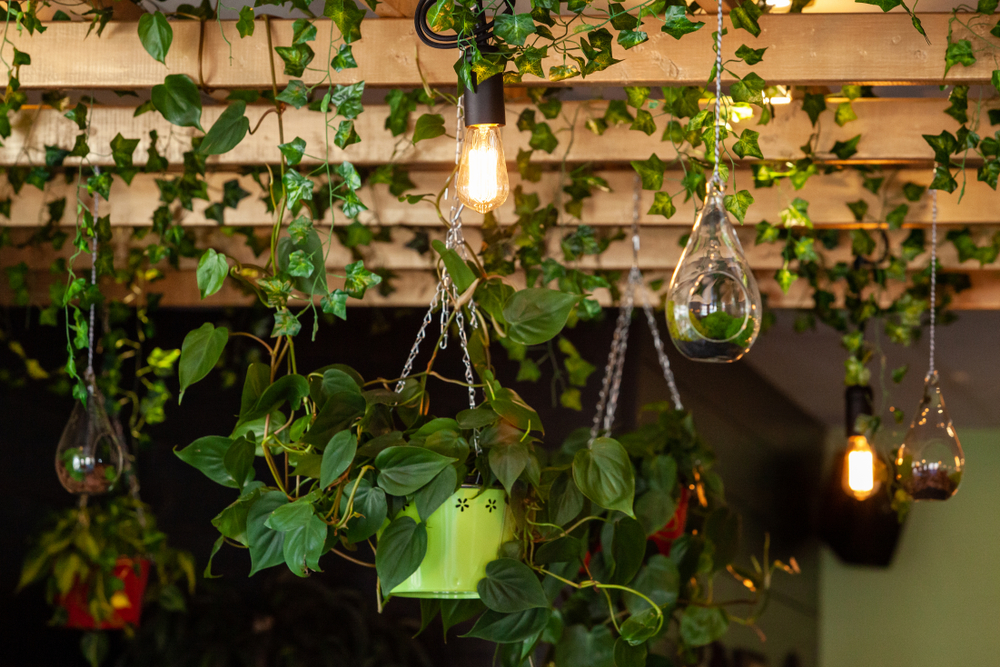
These minimalist bulb lights illuminate plant displays while blending in with the scenery. These industrial lights feel elegant and natural hanging alongside leafy plants and mini terrariums.
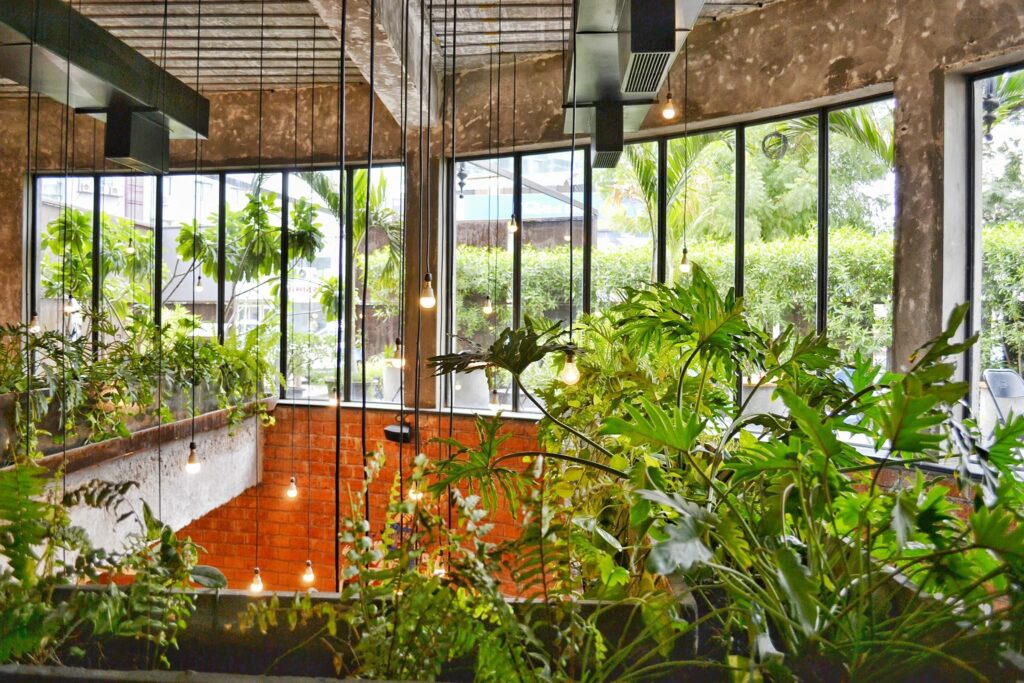
Hanging lights can be combined with natural light from outside as well. This beautiful, open space is accented with simple hanging bulbs. The bulb pendants are long enough to reach eye level, but the cords blend nicely with other lines in the room.
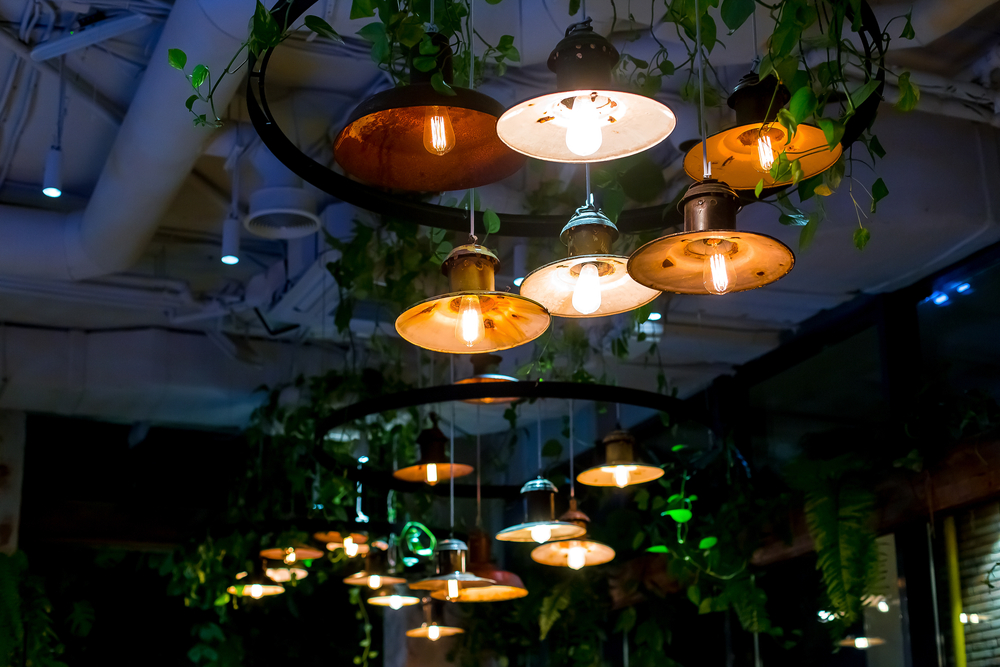
These industrial-feeling pendants show a creative adaptation of a plant and light combination. Vines hanging from the ceiling are an unexpected accent to a warehouse-style ceiling. The vintage pendant lamps tie everything together.
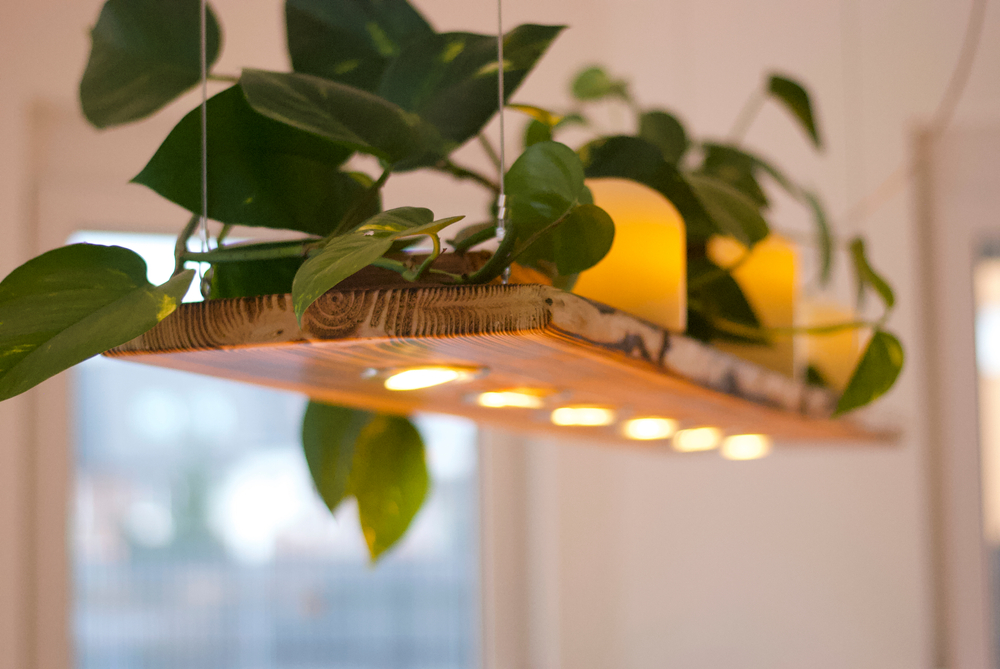
You don’t have to have a lot of surface area to add life to your space. This light fixture doubles as a plant stand, creating a natural, rustic, multi-purpose conversation starter.
Find Nature-Inspired Lights
If the thought of keeping a bunch of house plants alive gives you hives, not to worry! Instead of tucking your lights amongst your plants, find light fixtures that echo the shapes and textures of the natural world. They’ll give you a great conversation piece and require zero watering.
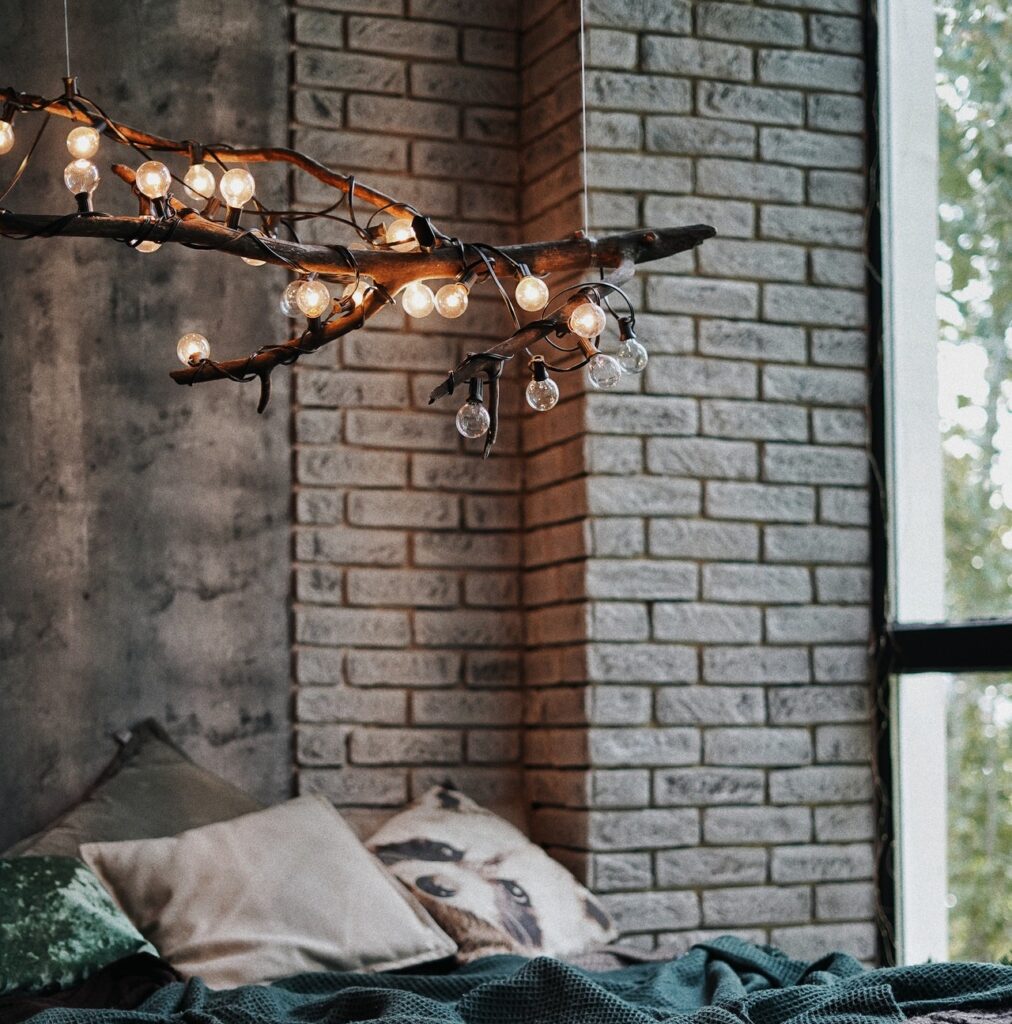
Here’s a natural take on a pendant light. A string of white bulb lights wrapped around a tree branch adds a little fairy magic to a simple, gray room. It’s suspended from a cable in the ceiling to create a “floating” effect.
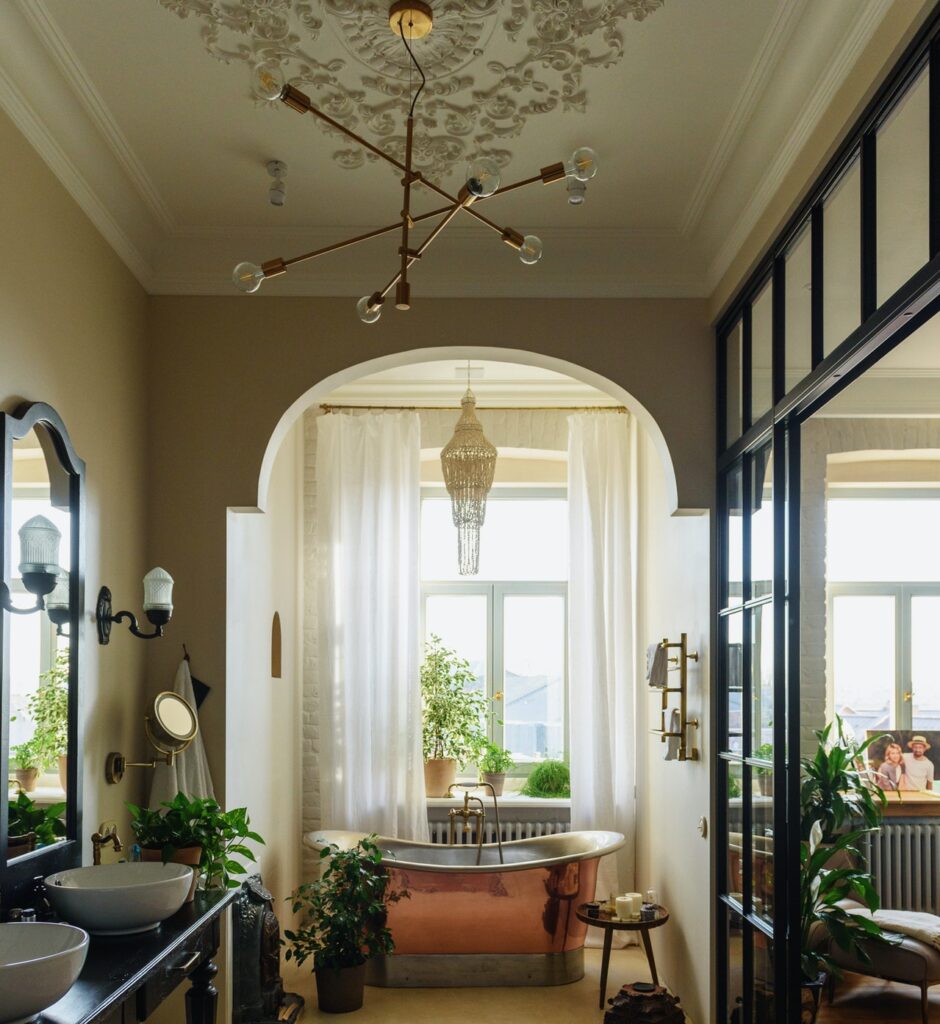
This chandelier is a modern take on the tree-branch concept. The multi-directional placement of the bulbs, along with its earthy copper color tones, gives off natural, modern vibes.
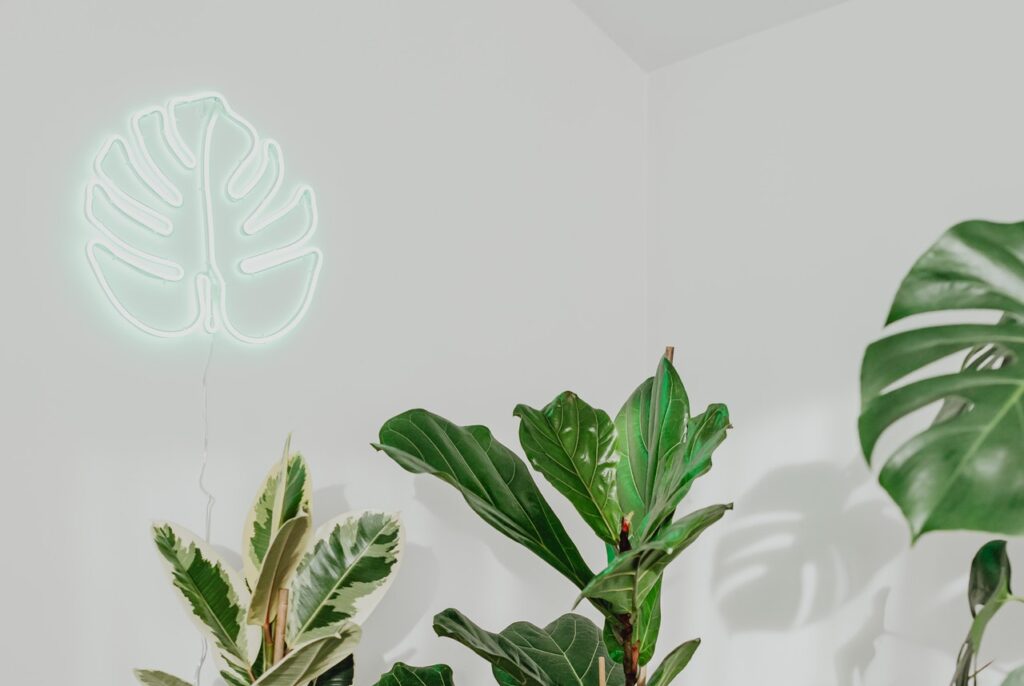
You can find some creative, colorful lights patterned after plants. This vibrant LED wall light makes a statement on a plain white wall. Not only are they a fun pop of color, but LEDs are also energy-efficient — it’s a green double-win.
Emphasize Natural Colors
What better way to bring the outside in than with a natural color palette? Greens, browns, and blues are staples in the interior design industry for a reason! But – any natural color palette works here. Snap some pictures of the world outside your door, or find a picture of your dream destination, and then head to a lighting showroom to find fixtures that match!
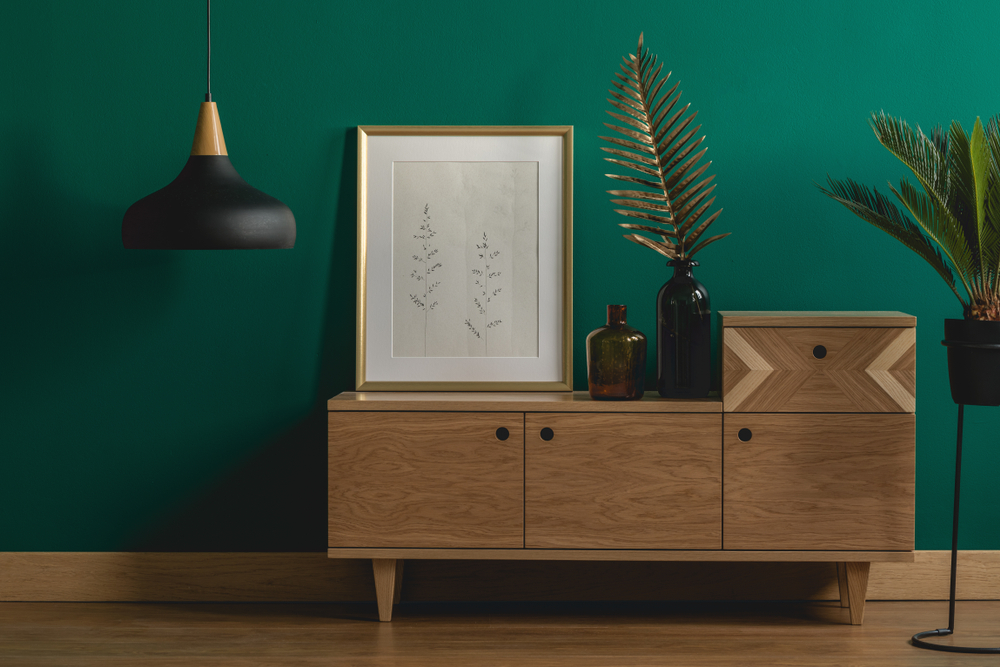
Natural colors with accents of dark blues and greens are a great way to create an outdoorsy feel. This black and gold pendant light creates a perfect balance of color in front of a forest green wall.
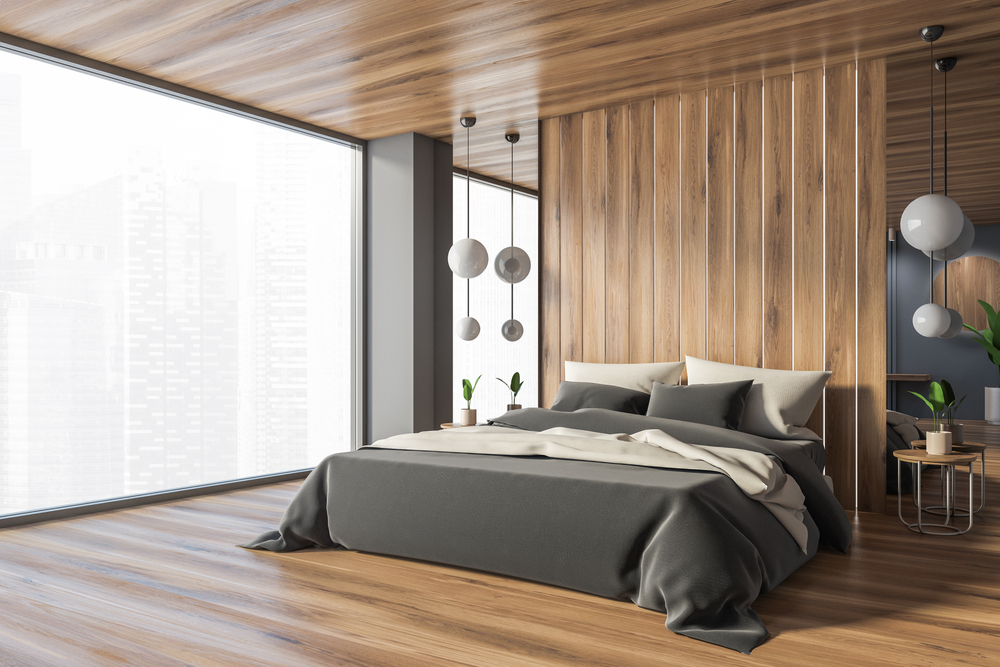
These pendant spheres are also a great example. The gold and cream lights are soft, neutral, and subtle, which lets the room’s natural wood textures shine.
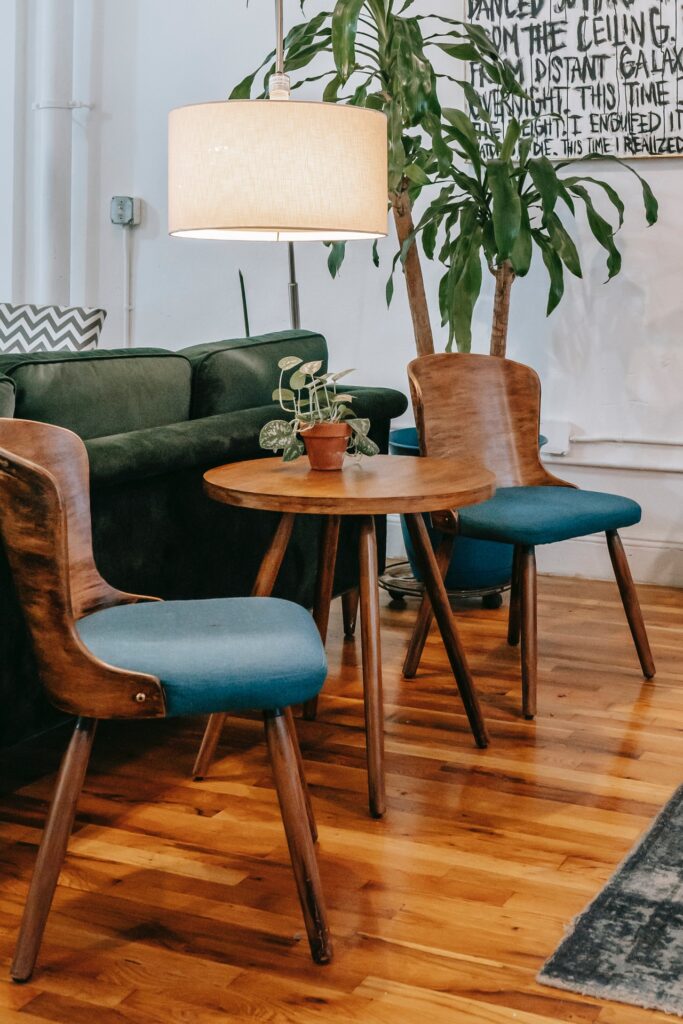
Lampshades are also easy to find in natural colors. They add a beautiful, polished touch without being too busy or elaborate. This hanging lamp shade shows how beige can accent a room full of plants, wood, and other natural elements.
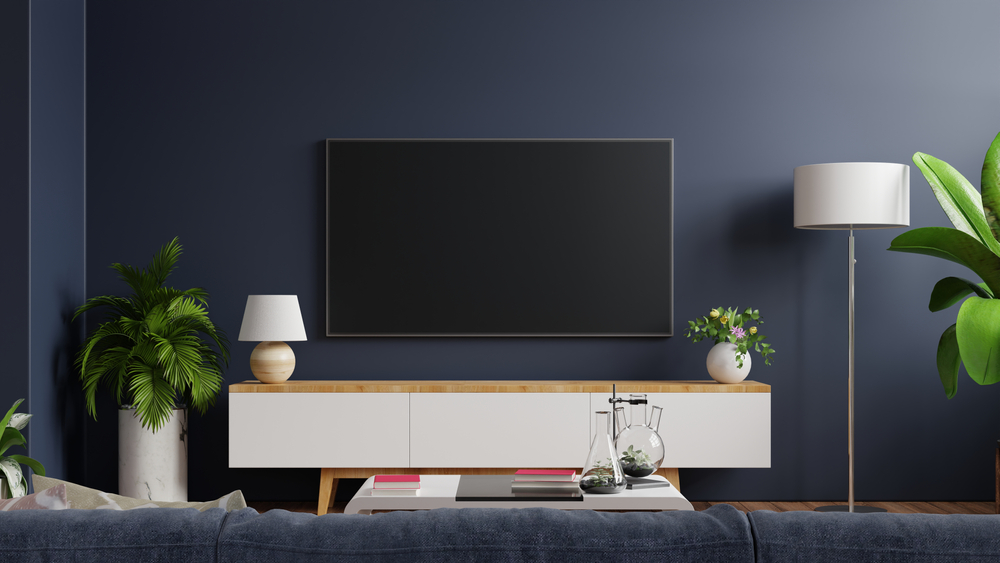
These are some classic, basic lamp designs. Next to other, more eccentric lamp styles, they might not be noticeable. Next to a deep blue wall, however, they stand out.
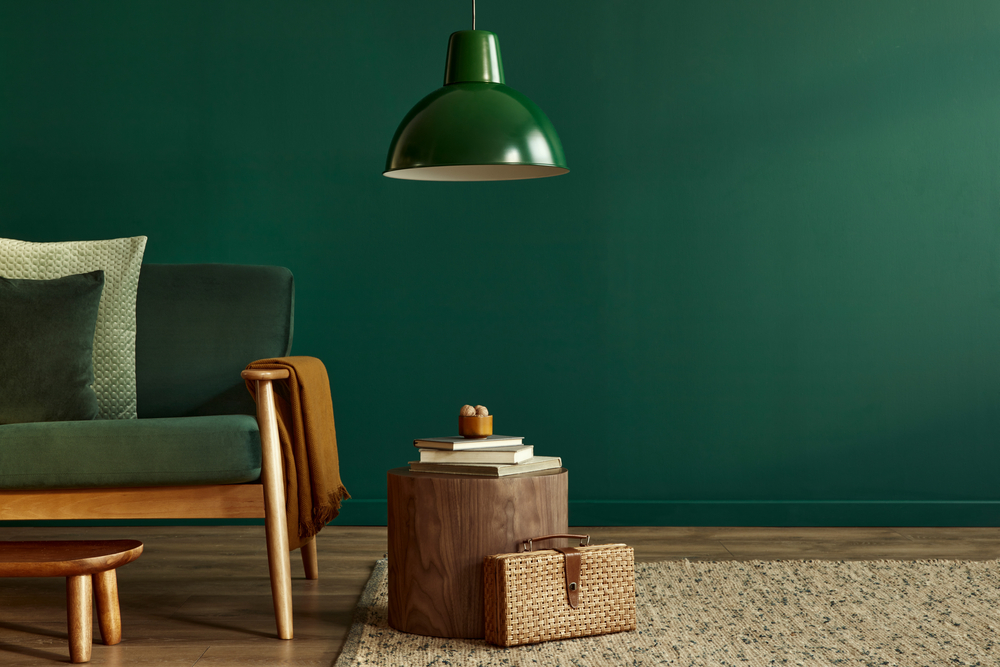
A green pendant lamp with a green wall and green furniture might seem like a lot, but it works. Having various shades of the same color adds a fun pop of personality.
Include Natural Materials
Your light fixtures don’t have to be synthetic and industrial just because they’re connected to the grid. Natural materials such as rattan have come back in a big way.
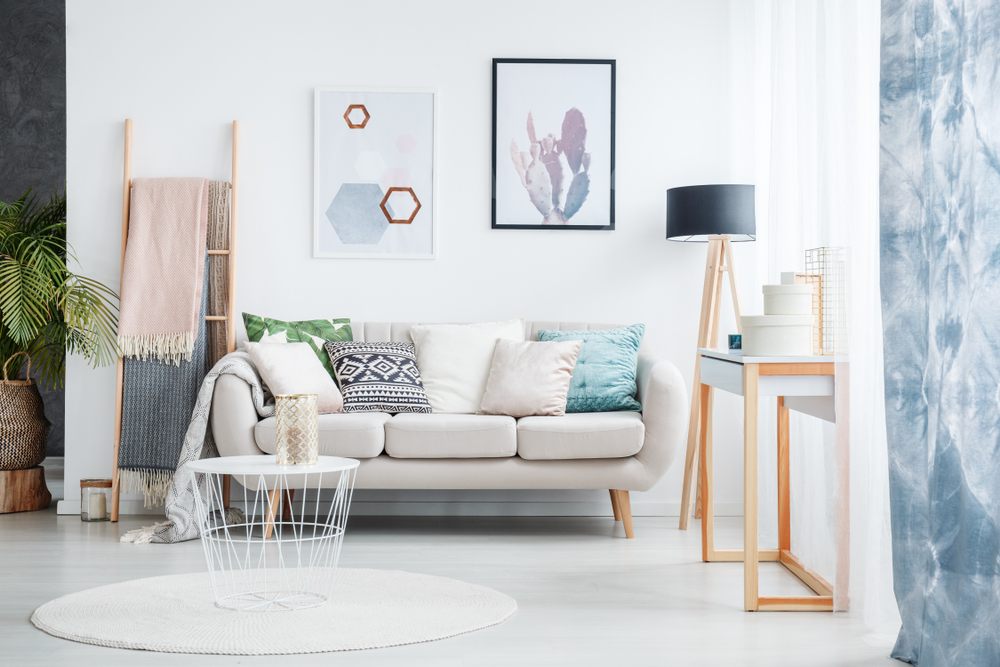
This cozy living room is filled with soft, natural materials. The wood lamp brings a natural warmth, and a bit of balanced structure, to this comfy space.
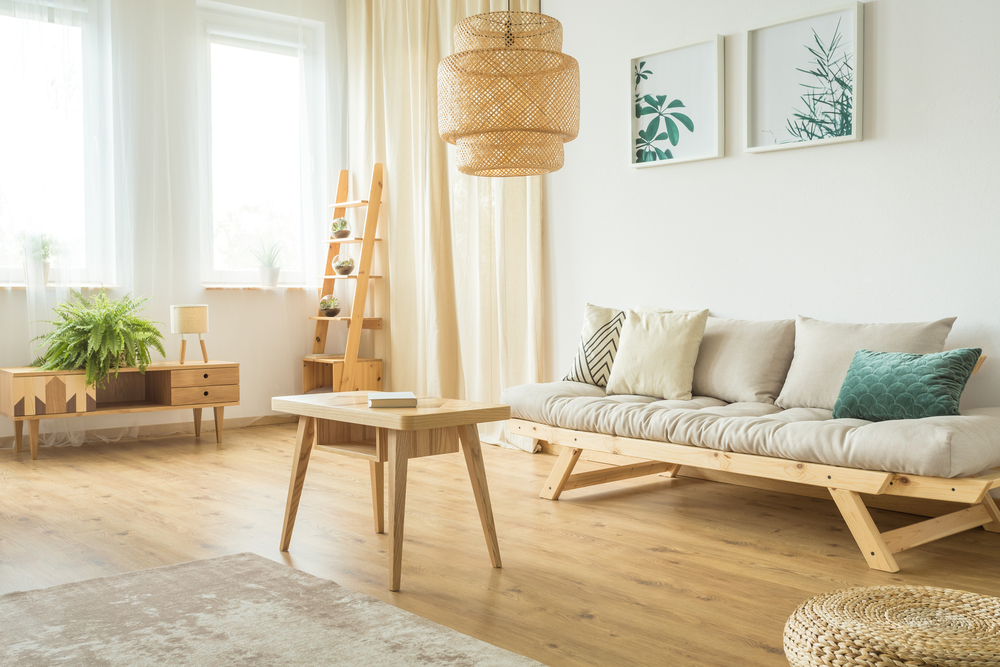
Some other popular materials include woven straw, wicker, or bamboo. This woven shade is a gorgeous shape and color. It also lets enough light through to illuminate all the other natural features of the room.
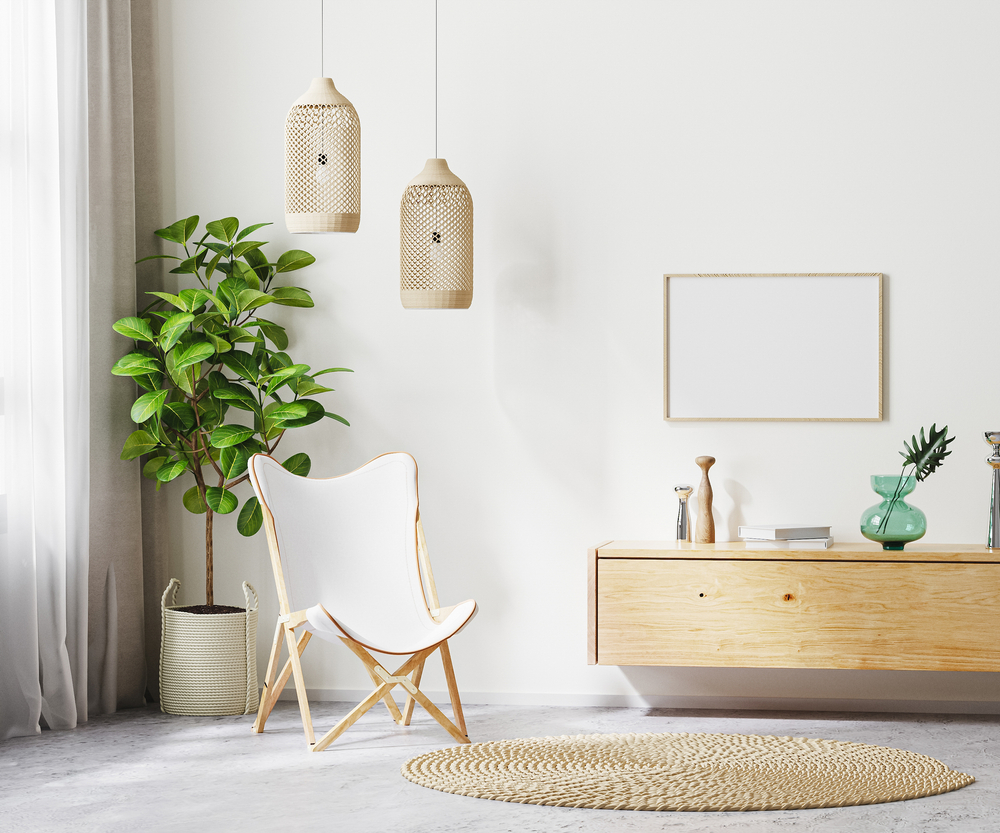
Woven shades are a great way to bring nature into your lighting. They illustrate that the size, shape, and color can vary based on the design of the room they’re going in. They can also be paired up to add another layer of design.
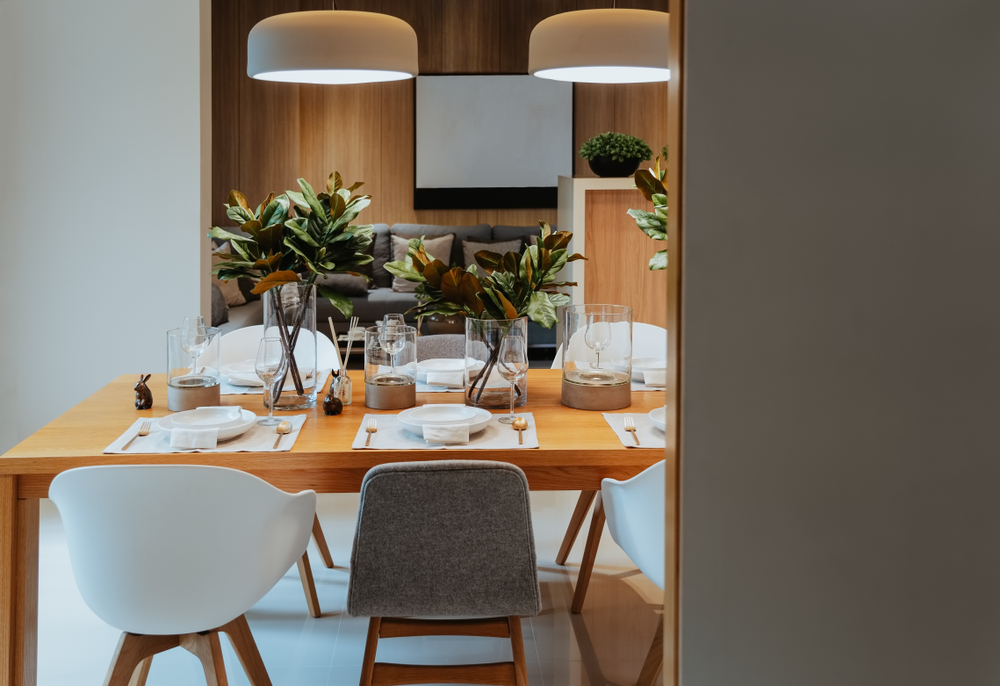
Ceramic is a beautiful natural material for a light fixture. These two domed ceramic pendants give off a warm glow that’s perfect for a cozy dinner.
—————–
Drawing inspiration from nature to decorate our homes isn’t a new idea. It’s lasted for centuries because it works – we love to bring the outside in! There’s no right or wrong way to make it work for you, so find something you love and get started!
If you’d like an extra hand finding just the right natural touch for your next lighting project, our lighting experts would love to help!. Give us a call, or stop by our showroom for the breath of fresh air that comes with a lighting update.
